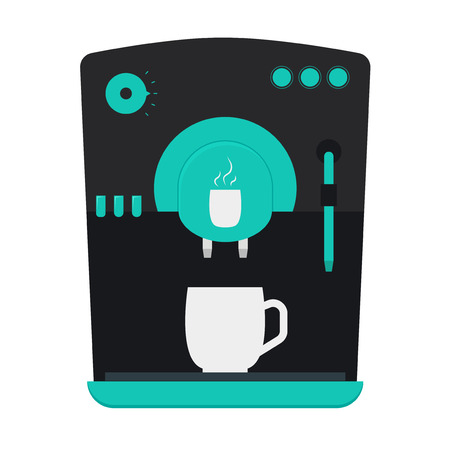Introduction to Third-Wave Coffee
Take a stroll down almost any city block in America today and you’re likely to spot a bustling café, its windows fogged from the steam of freshly brewed single-origin coffee. But this isn’t just any cup of joe—it’s the product of the Third-Wave coffee movement, a cultural shift that has transformed how Americans think about their daily caffeine fix. Born out of a desire for quality over quantity, Third-Wave coffee places an emphasis on transparency, traceability, and artisanal craftsmanship at every step—from farm to cup. Unlike earlier waves of coffee culture that prized convenience or mass appeal, the Third-Wave movement values the unique story behind each bean and the skill required to bring out its best flavors. At the heart of this revolution is the barista: no longer just a button-pusher behind an espresso machine, but a passionate craftsman and a bridge between producers and consumers. In these vibrant coffeehouses, baristas serve as educators and storytellers, guiding customers through tasting notes and brewing methods with the same reverence as sommeliers in a fine wine bar. The American coffee scene has been redefined by this close-knit relationship, turning every visit into a sensory exploration—one where both quality and connection matter most.
2. Breaking Down the Barista’s Evolving Role
In the early days of American coffee culture, baristas were largely seen as routine service providers, churning out drip coffee and espresso shots with speed and consistency. However, with the rise of third-wave coffee, this perception has shifted dramatically. Today’s baristas are not only skilled craftspeople but also educators and community influencers whose impact stretches far beyond the counter.
Baristas now master a spectrum of skills—from dialing in single-origin beans to intricate latte art. Their daily work is a blend of science and artistry, requiring both technical knowledge and creative flair. This transformation in role can be better understood by breaking it down into three primary domains:
| Traditional Role | Modern Third-Wave Barista |
|---|---|
| Basic beverage preparation | Precision brewing, sensory analysis |
| Customer service | Coffee education & storytelling |
| Transaction processing | Community engagement & event hosting |
The modern barista acts as a guide for curious customers, explaining the nuances of terroir, processing methods, and brew techniques. They might lead public cuppings or share tasting notes that evoke everything from Meyer lemon to wildflower honey. In some neighborhoods, baristas have become local tastemakers—organizing pop-ups, collaborating with nearby bakeries, or even launching their own micro-roasteries.
This shift isn’t just about elevating coffee; it’s about forging genuine connections with people. As ambassadors of specialty coffee, today’s baristas help shape local café culture while inspiring a deeper appreciation for the craft—one cup at a time.

3. Skill Sets That Set Third-Wave Baristas Apart
In the world of third-wave coffee, baristas are more than just operators behind an espresso machine—they’re artisans with a deep toolkit of technical know-how, sensory intuition, and creative flair. It’s no exaggeration to say that today’s specialty barista is expected to master an impressive range of skills, blending science and artistry in every cup.
Technical Knowledge: Precision in Every Extraction
Third-wave coffee culture demands a strong grasp of the technical aspects behind brewing. Baristas must understand everything from grind size calibration and water chemistry to brew ratios and extraction time. Dialing in a single-origin espresso isn’t just about following recipes—it’s about reading the subtleties of each coffee and making micro-adjustments for peak flavor. Familiarity with state-of-the-art equipment, whether it’s a pressure-profile espresso machine or a precision pour-over setup, is non-negotiable in top-tier cafes across cities like Portland or San Francisco.
Sensory Skills: The Palate as Compass
The mark of a third-wave barista goes far beyond machinery; it lives in their palate. Cupping sessions—where coffees are tasted side by side—are routine, allowing baristas to distinguish nuanced notes from Ethiopian heirlooms to Colombian Geshas. This sensory training is essential for guiding customers through tasting flights or recommending a particular origin based on flavor profiles. The ability to identify subtle shifts in sweetness, acidity, and body transforms coffee service into a guided experience rather than a transaction.
Craftsmanship: From Latte Art to Customer Connection
Craftsmanship shows up both in the cup and on its surface. Hands-on latte art has become a hallmark of third-wave cafes, with intricate rosettas and tulips demonstrating not just skill but pride in presentation. But true craftsmanship extends further—it’s about consistency, care in preparation, and genuine hospitality. A great barista crafts not only drinks but also moments, fostering connections that turn a neighborhood coffee shop into a local hub. In America’s thriving urban coffee scenes, these skill sets set the best apart—elevating the humble cup into something extraordinary.
4. Building Community and Customer Engagement
In the heart of third-wave coffee shops, baristas are more than skilled brewers—they’re culture-makers, curators of conversation, and neighborhood connectors. As the specialty coffee movement has swept through cities from Portland to Brooklyn, the role of the barista has evolved into one that actively nurtures a sense of belonging. Today’s coffee bars aren’t just about caffeine; they’re communal spaces where learning, sharing flavor notes, and exchanging stories become as important as the espresso itself.
The Coffee Bar as a Modern Agora
Third-wave cafes often resemble a modern-day agora, where regulars and newcomers alike gather to explore new coffees, discuss roasting techniques, or simply unwind. Baristas facilitate this by creating a welcoming environment—remembering names, recommending beans based on past preferences, and encouraging customers to try something new. In many cases, these relationships form the backbone of local coffee culture.
Interactive Tasting Experiences
Baristas act as guides through the world of single-origin beans and nuanced brew methods. Tasting flights and public cuppings have become signature events in American specialty cafés. These experiences invite guests to slow down and engage all their senses while discussing tasting notes, origins, and brewing variables with both staff and fellow patrons.
| Community-Building Initiatives | Description |
|---|---|
| Coffee Tastings & Cuppings | Guided sessions for exploring new beans and methods with educational commentary from baristas. |
| Latte Art Throwdowns | Friendly competitions that bring together both industry professionals and curious locals. |
| Storytelling Nights | Events where customers and staff share personal coffee journeys or origin stories behind the beans. |
| Sensory Workshops | Hands-on classes focusing on aroma identification and palate development. |
The Power of Storytelling in Coffee Culture
Storytelling is woven into every interaction—a barista might explain how a particular Guatemalan micro-lot supports women farmers or recount anecdotes from trips to origin countries. These exchanges create a deeper appreciation not just for what’s in the cup, but for the people and places behind it. Customers leave feeling like insiders, connected to a global tapestry via their local café.
A Two-Way Street: Mutual Growth
This approach fosters mutual growth: customers become more discerning and adventurous in their tastes, while baristas hone their ability to communicate complex ideas accessibly. The result is a vibrant coffee community where everyone’s curiosity and palate are continually evolving—a testament to how third-wave baristas shape not only what we drink but how we connect over coffee.
5. Beyond the Counter: The Barista as Coffee Evangelist
In the heart of America’s third-wave coffee movement, baristas have stepped far beyond their traditional roles behind the espresso machine. Today, they are passionate advocates—coffee evangelists—who bridge the gap between farmers, roasters, and customers. Their advocacy goes beyond latte art; it involves storytelling, education, and a deep commitment to ethical sourcing and sustainability. American baristas frequently share the journey of each bean—from smallholder farms in Ethiopia or Colombia to the local café counter—highlighting the hands and communities that make every cup possible.
This evangelism is woven into daily café culture. You’ll often hear a barista eagerly explaining what makes a single-origin pour-over special, or how a direct-trade relationship ensures fair compensation for producers. By fostering transparency about where coffee comes from and how it’s produced, baristas help customers develop a discerning palate while inspiring them to value both quality and ethics. Many cafés across cities like Portland, Austin, or Brooklyn now feature information cards, tasting flights, and even origin-themed events—transforming every visit into an exploration of global flavors and responsible choices.
Baristas also champion sustainability within their own walls. From advocating for reusable cups to minimizing waste in daily operations, their efforts ripple through local communities. Some even collaborate with neighborhood businesses to compost coffee grounds or launch zero-waste initiatives. In doing so, they shape not just how Americans drink coffee, but how they think about consumption at large—a subtle nudge toward more mindful habits.
Ultimately, third-wave baristas are catalysts for change. Their passion elevates the café experience from mere transaction to meaningful connection. By sharing stories and values with every cup served, they invite customers to join a movement that celebrates craft, uplifts producers, and cherishes sustainability—one brew at a time.
6. Challenges and Opportunities in the U.S. Coffee Landscape
American baristas today stand at a crossroads shaped by both significant challenges and unprecedented opportunities. The third-wave coffee movement has elevated expectations for skill, hospitality, and product knowledge, but this evolution also brings new pressures. Wage debates remain at the forefront—baristas in cities from Portland to New York grapple with the realities of living wages versus tipped compensation, all while mastering complex brewing methods and deepening their craft. Yet, as coffee culture becomes more celebrated, the role of the barista is slowly shifting from “just a job” to a respected career path. Specialty shops increasingly offer professional development, sensory training, and even pathways into roasting or management for those passionate about coffee’s nuances. Still, the rewards are not just financial; American baristas find community, creative expression, and pride in shaping customers’ daily rituals. Looking ahead, the future holds promise: sustainability initiatives, technology integration, and greater recognition of coffee professionals’ expertise may redefine what it means to be a barista in the U.S., fostering an environment where craftsmanship truly flourishes.

